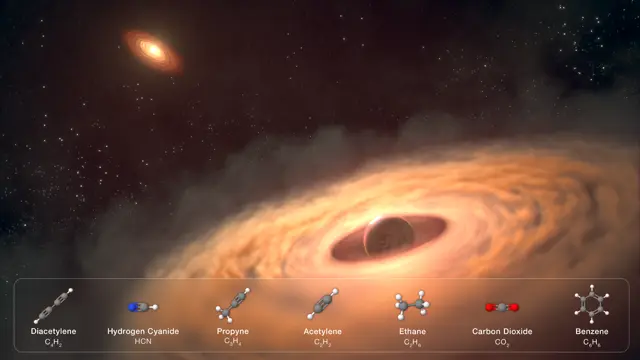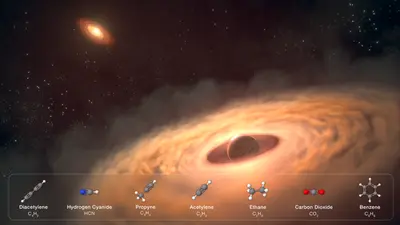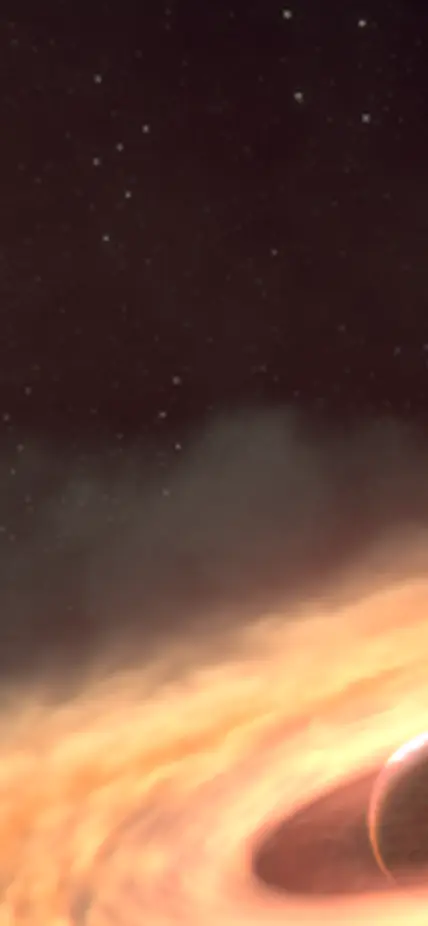Washington, DC—For the first time, astronomers have characterized the disk of gas and dust that forms around a gas giant planet that is still in the final stages of formation. Using the powerful capabilities of JWST, Carnegie Science’s Sierra Grant and Gabriele Cugno of the University of Zurich revealed carbon-rich materials in the disk of a proto-gas giant called CT Chamaeleontis b. Their findings are published in The Astrophysical Journal Letters.
Circumplanetary disks are a byproduct of the formation process by which giant planets are born from the gas and dust surrounding a young star. These remnants of planetary building blocks constitute a reservoir of material that accretes onto the baby planet and can give rise to moons.
Because they are faint and exist in such close proximity to their host stars, these circumplanetary disks have been very challenging to study.
“We used JWST as a high-contrast spectrograph, which enabled us to make the first-ever detailed observations of one of these moon-forming disks and to understand its chemical composition in detail,” Grant explained. “Our work represents the first time that this instrument has been used in high-contrast mode to detect the emission of a faint companion hidden in the bright glare of its host star at full spectral resolution.”
The disk they observed surrounds CT Chamaeleontis b, which is believed to be a proto-gas giant in the final stages of formation. First detected in 2007, it is around 17 times more massive than Jupiter and orbits its host star from a distance 507 times that between Earth and the Sun.
Grant and Cugno found that CT Chamaeleontis b’s circumplanetary disk is extremely carbon rich. They detected evidence of seven carbon-containing molecules, including benzene and other complex materials.
“Surprisingly, the moon-forming material we found in the disk surrounding CT Chamaeleontis b is chemically distinct from the planet-forming disk that surrounds its host star, which contains no carbon molecules that we could detect,” Grant said.
This contrast between the circumplanetary disk and the circumstellar disk within a single system indicates rapid chemical evolution occurring on million-year timescales.
This work opens new frontiers in our understanding of moon formation around gas giants. For example, the rapid chemical evolution occurring in the CT Chamaeleontis b circumplanetary disk could help explain why Jupiter’s moons are so strikingly diverse in habitat—a range that includes both the oceanic Europa and the carbon-rich Titan.
Artist's Rendering


An artistic rendering of a dust and gas disk encircling the young exoplanet, CT Cha b, 625 light-years from Earth. Full image, annotation, and caption shown below. Credits: Illustration: NASA, ESA, CSA, STScI, Gabriele Cugno (University of Zürich, NCCR PlanetS), Sierra Grant (Carnegie Institution for Science), Joseph Olmsted (STScI), Leah Hustak (STScI)
